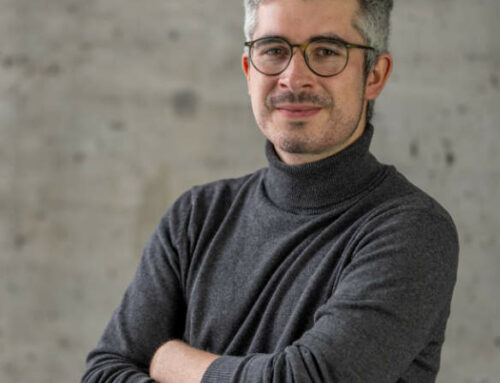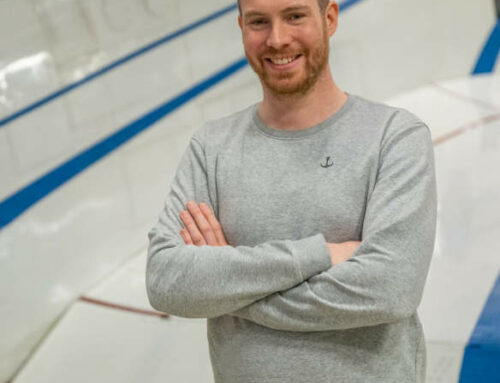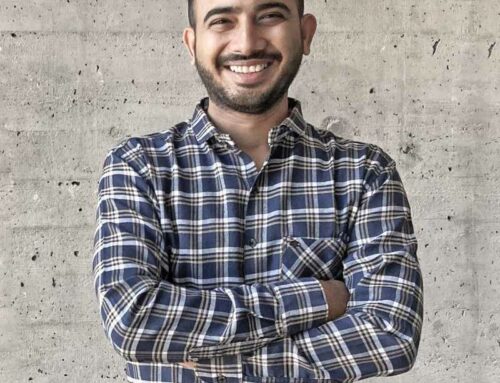“Someday eVTOLs will be accepted as a common transportation solution, similar to the role of a car or a bus nowadays.”
Phillip Kröll, Aerodynamics Engineer @ERC

“Someday eVTOLs will be accepted as a common transportation solution, similar to the role of a car or a bus nowadays.”
Phillip Kröll, Aerodynamics Engineer @ERC
Meet Philipp Kröll, an aerodynamics engineer at ERC. He started his journey with us as a student while pursuing his master thesis centered in the “Aerodynamic design of wingtip extensions”. Post-graduation, he decided to join the Aerodynamics, Fluids and Loads cluster to implement his acquired knowledge and findings to our eVTOL.
Discover more about his pivotal role, the team, and his forward-looking perspectives on the future landscape of eVTOLs in the interview below.
Thank you, Philipp, for taking the time to talk to us today. Can you start by telling us about your team and your role as an aerodynamics engineer?
I’m currently working in the Aircraft Design, Fluids and Loads cluster where, together with Florian Heckmeier, we are responsible for the aerodynamic simulations of our aircraft. Our job consists in simulating and optimizing both, separate components and the whole aircraft, to find out the aerodynamic behavior of our vehicle during flight. Furthermore, these simulations will help us get the optimal airframe design for our use case.
What kind of dependencies or interconnections exist between your cluster and other teams?
Our cluster is providing the aircraft design, the aerodynamic data, as well as the loads of the whole aircraft; that’s why our main interconnection is with the “Modelling and Simulation” cluster, in charge of integrating that data into the aircraft model. However, we also have some interconnections to other clusters if our expertise is required for a certain problem.
What do you find to be the most difficult aspect of your role as an aerodynamics engineer?
One of the most challenging things I face is forecasting results accurately – when you expect an outcome, but the simulations show a different one, trying to find out what went wrong or if your initial guess wasn’t right can be very challenging. However, this is also a lot of fun, and you learn a lot from it.
Can your knowledge of aerodynamics be applied to your daily life?
For sure; one of my hobbies is to go whitewater kayaking and my knowledge about aerodynamics and fluid flows helps me a lot when I have to “read” how the water flows. It also helps me find the best line during my descent along the rivers of the Alps.
“When you expect an outcome, but the simulations show a different one, trying to find out what went wrong or if your initial guess wasn’t right can be very challenging”
How are you applying the knowledge you acquired in your thesis “Aerodynamic design of wingtip extensions” to the design of our eVTOL?
During my thesis, I developed an optimization workflow which is capable of aerodynamically optimizing different parametric geometries. I’m currently using this workflow to optimize the wingtip design of our eVTOL and, in the future, this optimization workflow will also be applied to other components.
How comparable is the role of aerodynamics within the design of a fixed-wing aircraft to that of eVTOL vehicles?
The physics stays the same whether you fly a fixed-wing aircraft or an eVTOL – so in principle, it is comparable. However, as eVTOLs are taking off (and landing) vertically, they share similarities with helicopters and fixed-wing aircrafts, which makes the aerodynamics substantially more complex. Especially in the transition phase, there are a lot of new challenges that a fixed-wing aircraft developer does not have to face.
How do you envision the evolution of eVTOLs?
I imagine that someday eVTOLs will be available for everyone and that they will be accepted as a common transportation solution similar to the role of car or a bus nowadays. However, this is going to take a while.
Can you tell us about a recent advancement in aerodynamics that will have a positive impact on the Urban Air Mobility world and why?
Something that has an impact on the aerodynamic analysis of eVTOLs are the continuous reductions in the computing time of CFD simulations reached by different improvements e.g. by the usage of GPUs in the solver process. Since an eVTOL has a very complex aerodynamic behaviour, especially in the transition phase, very high computational resources are required. A reduction of these simulation times would change a lot for the aerodynamic analysis in the Urban Air Mobility (UAM) space since then the aerodynamic phenomena could be analysed faster.
“I have no doubt that in the future we are going to be a well-known player in the UAM space”
What is unique about ERC?
I think that ERC has an exceptional company culture and I really enjoy working here. Additionally, even though the team is rather young, I’m impressed by the advances we have made and the milestones we have achieved during the two and a half years of development. That’s why I have no doubt that in the future we are going to be a well-known player in the UAM space.
Finally, what does #BiggerThanUs mean for you?
For me, it means that I can work with friends to develop a disruptive aircraft that will pave the way to future transportation. To have the opportunity to do that for a living is pretty awesome.
We would like to thank you, Philipp, for sharing with us your experiences and insights, as well as for the time you took for the interview.
If the idea of being part of a revolutionary new aviation project is just what you’ve been looking for, then check out our our career page. Maybe you’re just what we’ve been looking for, too…
About eRC-System GmbH
eRC-System GmbH develops a manned electrical vertical takeoff and landing vehicle, having all aspects of certified aerospace products in mind, right from the start. The company is closely cooperating with suppliers, partners and authorities in order to realize sustainable solutions for technical, operational, and infrastructural challenges.
ERC was founded in 2020 by a team of aerospace engineers that already has gained experience in this field for many years. Being pioneers in the development of new technologies that will last beyond a human and that will have impact on the daily lives of millions, requires ERC’s “Passioneering spirit” – the combination of passion and know-how.
Being well-funded, the initial team already grew a full-featured company around the topic that is still prospering fast and highly dynamic.



